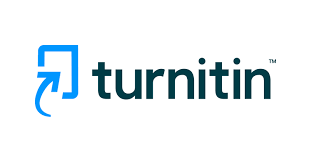Physicochemical Changes of Reused Cooking Oils Used to Prepare Potato Chips, Chicken, and Beef
Abstract
The physiochemical characteristics of cooking oils can be altered by deep-frying techniques, which lowers the oil’s quality. In this study three different food types – potato chips, chicken and beef – were deep-fried using reused soya bean or sunflower cooking oils, and the physiochemical characteristics of the reused oil were measured after each round of frying. The study further compared the impact of reused cooking oil on the growth of Aspergillus flavus fungal colonies. By the 8th turn of frying the mean viscosity difference of beef reused cooking o il viscosity was 42.83 +/- 0.98 cSt, significantly different from the potato chips reused cooking oil at 21.62 +/- 1.26 cSt. For both reused soya bean and sunflower oil samples, the mean difference of AV and PV generally increased. This change in the AV and PV values was influenced by the type of food being prepared as well as the frequency of repeated use. Furthermore, media supplemented with reused oil leftover from beef frying cycles had significantly increased fungal growth in comparison to fungi grown on fresh oil supplemented media. Therefore, appropriate guidelines are required to monitor the quality of reused cooking oil and avoid health risks associated with using poor quality oils to prepare food for consumption.
Keywords
Full Text:
PDFReferences
Al-harethi, A., Abdullah, Q., & Mahmoud, A. (2016). Isolation and Identification of Fungal Post-harvest Rot of Some Fruits in Yemen. PSM Microbiol, 1, 36–44.
Alimentarius. (1999). Codex alimentarius: Standard for named vegetable oil. Rome: World Health Organization : Food and Agriculture Organization of the United Nations.
An, K.-J., Liu, Y.-L., & Liu, H.-L. (2017). Relationship between total polar components and polycyclic aromatic hydrocarbons in fried edible oil. Food Additives & Contaminants: Part A, 34(9), 1596–1605. https://doi.org/10.1080/19440049.2017.1338835
Awuchi, C., Ikechukwu, A., Victory, I., & Gonzaga, A. (2018). Effects of Repeated Deep Frying on Refractive Index and Peroxide Value of Selected Vegetable Oils. 4.
Cherif, A., & Slama, A. (2022). Stability and Change in Fatty Acids Composition of Soybean, Corn, and Sunflower Oils during the Heating Process. Journal of Food Quality, 2022(1), 6761029. https://doi.org/10.1155/2022/6761029
Choe, E., & Min, D. (2007). Chemistry of Deep-Fat Frying Oils. Journal of Food Science, 72, R77-86. https://doi.org/10.1111/j.1750-3841.2007.00352.x
Crowe, T., & White, P. (2001). Adaptation of the AOCS official method for measuring hydroperoxides from small-scale oil samples. Journal of Oil & Fat Industries, 78, 1267–1269. https://doi.org/10.1007/s11745-001-0424-7
Da Silva, J., Dilkin, P., Fonseca, H., & Corrêa, B. (2004). Production of aflatoxins by Aspergillus flavus and Fumonisins by Fusarium species isolated from Brazilian sorghum. Brazilian Journal of Microbiology - BRAZ J MICROBIOL, 35. https://doi.org/10.1590/S1517-83822004000200002
Dobarganes, M., Márquez-Ruiz, G., & Velasco, J. (2000). Interaction between fat and food during deep-frying. European Journal of Lipid Science and Technology - EUR J LIPID SCI TECHNOL, 102, 521–528. https://doi.org/10.1002/1438-9312(200009)102:8/93.0.CO;2-A
Firestone, D. (ed). (2017). Official methods and recommended practices of the american oil chemists’ society (Method AOCS Cd 3d—63) (7th Edition). American Oil Chemists’ Society Champaign.
Ganesan, K., Sukalingam, K., & Xu, B. (2019). Impact of consumption of repeatedly heated cooking oils on the incidence of various cancers- A critical review. Critical Reviews in Food Science and Nutrition, 59, 488–505. https://doi.org/10.1080/10408398.2017.1379470
Ghosh, T., Prasad, D., Dutt, N., & Rani, K. Y. (2007). Viscosity of Liquids: Theory, Estimation, Experiment, and Data. In Viscosity of Liquids: Theory, Estimation, Experiment, and Data. https://doi.org/10.1007/978-1-4020-5482-2
Jaarin, K., & Kamisah, Y. (2012). Repeatedly Heated Vegetable Oils and Lipid Peroxidation. In INTECH, Chapter (Vol. 10, pp. 211–228). https://doi.org/10.5772/46076
Lamb, K. E. (2017). The Survival of Various Pathogenic Organisms in Fats and Oils [Theses and Dissertations--Animal and Food Sciences.]. https://uknowledge.uky.edu/animalsci_etds/72/#:~:text=The%20animal%20fats%20and%20the,and%2037%CB%9AC%20storage.
Nawaz, H., Zafar, N., Jabeen, R., Amjad, A., Shah, M., & Munir, S. (2023). Effects of repeated frying on physicochemical characteristics, oxidative stress, and free radical scavenging potential of canola oil and ghee. European Journal of Lipid Science and Technology, 125(11), 2300053. https://doi.org/10.1002/ejlt.202300053
Nduka, J. K. C., Omozuwa, P. O., & Imanah, O. E. (2021). Effect of heating time on the physicochemical properties of selected vegetable oils. Arabian Journal of Chemistry, 14(4), 103063. https://doi.org/10.1016/j.arabjc.2021.103063
Oke, K., Idowu, M., Philip, S., Adeyeye, S., & Akinsola, A. (2017). Frying of Food: A Critical Review. Journal of Culinary Science & Technology, 1–21. https://doi.org/10.1080/15428052.2017.1333936
Rajendran, P., Alzahrani, A. M., Rengarajan, T., Veeraraghavan, V. P., & Krishna Mohan, S. (2022). Consumption of reused vegetable oil intensifies BRCA1 mutations. Critical Reviews in Food Science and Nutrition, 62(5), 1222–1229. https://doi.org/10.1080/10408398.2020.1837725
Rustom, I. Y. S. (1997). Aflatoxin in food and feed: Occurrence, legislation and inactivation by physical methods. Food Chemistry, 59(1), 57–67. https://doi.org/10.1016/S0308-8146(96)00096-9
Shindo, T., Horibe, E., Kitabayashi, S., & Ozawa, S. (2000). Color Degradation of Lubricating Base Oil Fraction Induced by Sunlight Irradiation. Journal of The Japan Petroleum Institute, 43, 346–350. https://doi.org/10.1627/jpi1958.43.346
Silva, F., Gibbs, P. A., Nuñez, H., Almonacid, S., & Simpson, R. (2014). Thermal Processes | Pasteurization. In Encyclopedia of Food Microbiology (pp. 577–595). https://doi.org/10.1016/B978-0-12-384730-0.00404-3
Suhaimi, M. Y., wahyudi, R., annisa, D., pernadi, N. lian, & Purwamto, W. (2022). Smart Filtering System Based On Cooking Oil Microcontroller As A Healthy Solution For Fried Traders On The Roadside. International Journal of Ethnoscience, Bio-Informatic, Innovation, Invention and Techno-Science, 1(1). https://doi.org/10.54482/ijebiiits.v1i1.5
Tesfaye, B., & Mengistie, A. (2016). Physico-Chemical Characteristics and Level of Some Selected Metal in Edible Oils. Advances in Chemistry, 2016, 1–7. https://doi.org/10.1155/2016/3480329
Tolulope, O., Adesanya, D., Akinbule, O., & Philip, S. (2022). Effect of Frying Conditions on Textural Parameters, Color and Proximate Composition of Fried Fish Nuggets from Blue Whiting ( Micromesistius Poutassou ). Journal of Culinary Science & Technology, 1–13. https://doi.org/10.1080/15428052.2022.2087579
Tsuzuki, W., Matsuoka, A., & Ushida, K. (2010). Formation of trans fatty acids in edible oils during the frying and heating process. Food Chemistry, 123(4), 976–982. https://doi.org/10.1016/j.foodchem.2010.05.048
Urigacha, S. (2020). Quality Assessment of Oil Used for Frying of Potato Chips: In the Case of Wolkite University Community. American Journal of Bioscience and Bioengineering, 8, 92–98. https://doi.org/10.11648/j.bio.20200805.12
DOI: http://dx.doi.org/10.33512/fsj.v7i1.31417
Refbacks
- There are currently no refbacks.

This work is licensed under a Creative Commons Attribution-ShareAlike 4.0 International License.











